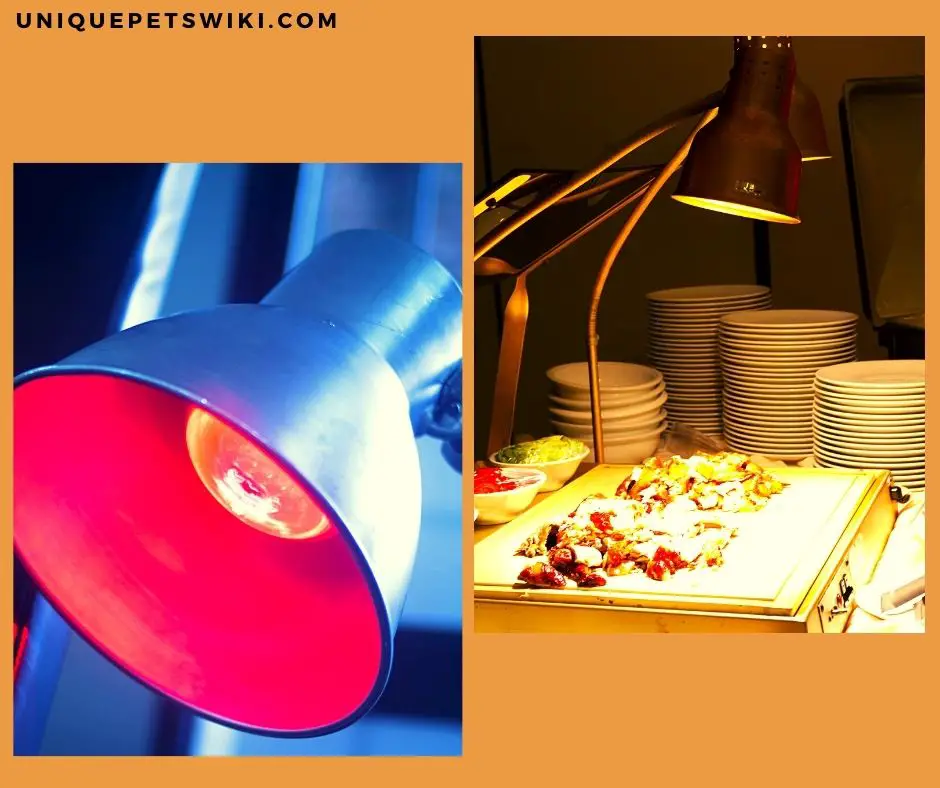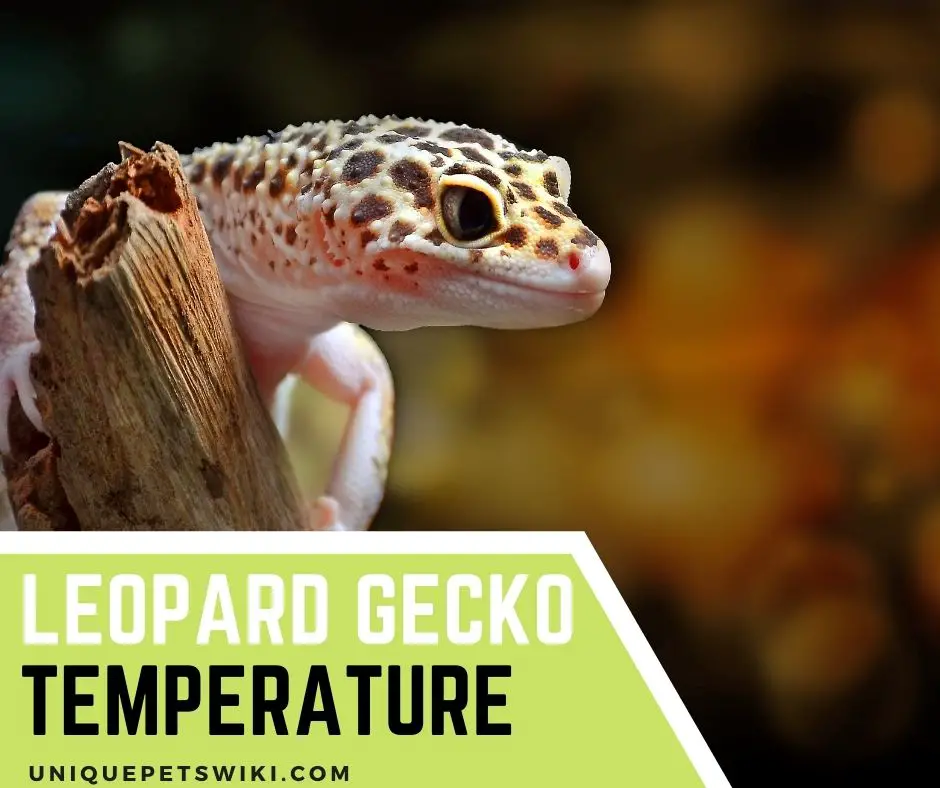A reptile such as a leopard gecko (Eublepharis macularius) requires the ideal temperature to survive and thrive. An ideal leopard gecko temperature is a warmer temperature of 30° to 35°C (86° to 95°F) with a basking heat of 40° to 45°C (104° to 113°F) and a cooling temperature of 24° to 28°C (75° to 82°F).
Most leopard geckos’ owners have trouble setting up or maintaining an exact replica of their pets natural environment. Hence, they resort to reading articles or watching how-to videos to acknowledge such problems.
It’s highly suggested to learn more about the temperature needed for your leopard gecko to prevent them from suffering serious illnesses, or worse, death.
Are you excited to set up and maintain the best shelter for your leopard gecko? Well, get ready and go grab a pen and paper! Keep reading while getting awed by straight facts on how to set up and maintain temperature for leopard geckos.
Contents
Leopard Gecko Temperature: How Is Good
Leopard geckos originally come from the dry lands of the Middle East, hence, owners need to make sure that the lighting sequence is 100% similar to their natural environment.
A low-consumption power light can be set on the top of the tank and left on for 12 hours daily. Make sure low-wattage light is not reachable by leopard geckos so they won’t burn themselves.
Leopard geckos can easily adapt to their environment. In the wild, they’re mostly situated in rocky and dry lands. They need moisture on their burrows for successful basking and hatching. Leopard geckos, though ambient-resistant, have to be set with balanced temperature especially during captivity. They need your utmost care.

Daytime Temps for Leopard Gecko
Leopard geckos tend to get vigorous at dusk and dawn because of their resistance to midday temperature.
It’s ideal to create a thermal gradient enclosure for leopard geckos to have temperature balance during cold and warm days. Cooler temperature should range from 75-80°F, and on the warmer side, it should be set to 80-85°F.
To keep their growth and development healthy, maintain their tank’s temperature and humidity. Humidity should be 50% and the tank’s temperature should be 75 °F to 95 °F during the day.
Nighttime Temps for Leopard Gecko
Leopard geckos are crepuscular, an accurate temperature should be set to their tank enclosure most especially during nighttime as heat tends to drop. To make sure temperature doesn’t drop below 65 °F, a heat lamp or ceramic lamp is needed.
Here’s an accurate distribution of temperature in a leopard gecko’s enclosure: Moist hide should be between 83-90 °F F, air temperature which is 4-6 inches above cool side of the ground should be 73-76 °F, and nighttime temperature in their tank should be set between 67-73 °F.
Light-wattage between 100 to 150 is best for leopard geckos. Leopard geckos are mostly active at night, having heat on their tank helps regulate their daily cycle and contributes to good mental health and invigorates appetite.
What Happens When Leopard Geckos Get Too Cold/Hot?
If leopard geckos do not get adequate temperature, they might suffer from bowel movements like digesting and eliminating waste. They may also suffer from malnourishment as their appetite and energy level decreases.
If the temperatures are too high, leopard geckos will hide and stay longer on the cooler side. If the temperature is too low or cold, they will spend more time in a warm hide. For that reason, they will become more lethargic, eating and pooping irregularly.
To prevent sudden death or health problems, a thermometer is required inside their enclosure opposite to the heat lamp with 85 °F as a standard temperature.

How To Maintain an Ideal Temperature For Your Leopard Gecko
A lot of resources that answer your what-questions would tell you the exact temperature or suggest the temperature your leopard geckos need. But, here’s a detailed explanation on how to maintain an ideal temperature for your leopard gecko.
As most experts would suggest, the average temperature should be reduced to between 70–77-°F once dusk. Many owners also like to set up an aquarium with both daytime and nighttime temperatures so it’s likely similar to their natural habitat of having a hotter or cooler side, making them live comfortably.
You need to heat the tank or aquarium since leopard geckos like warmer temperatures to maintain optimal health. A basking area with temperature between 94 and 97 °F is a preferable setting for them.
To ensure your leopard geckos stay healthier, a drop in temperature helps. Just make sure to know what temperature is needed during daytime and nighttime.
Use Lamps Or Heat mats To Warm Your Leopard Gecko’s Enclosure
Heat and light sources in tanks are needed for leopard geckos to obtain a temperature similar to their natural habitat, that is from daytime to nighttime. In order to acquire accurate temperature during daytime or nighttime, heat lamps and heat mats are the best options for you.
A heat lamp and heat mat are important for leopard geckos to maintain body temperature and not exceed to hotter or warmer temperature. Since leopard geckos utilize their environment to regulate body temperature, a reliable source of heat is ideal such as heat lamp and heat mat.

During nighttime, the heat lamp should be turned off yet ensure temperature doesn’t hit below 65 °F. Read more and take note of some best heat lamp and heat pad options for your leopard geckos enclosure at Best Heat Pad for Leopard Geckos in 2021.
Last update on 2022-12-29 / Affiliate links / Images from Amazon Product Advertising API
Keep Thermometers In The Enclosure To Monitor Temperature
Avoiding too high and low temperatures during daytime and nighttime are reasons why setting up a thermometer in a leopard gecko’s enclosure is recommended.
Owners need to ensure that the thermometer set up is not directly placed under the heat lamp and temperature is set to 85 °F. Extreme temperature decreases their time of survival.
You can set up digital thermometers and temp gun in their enclosure to monitor temperature. Leopard geckos have a body temperature of at least 86 °F. So it’s ideal to set up two thermometers, one on the cooler side and the other for a basking spot.
Last update on 2022-12-31 / Affiliate links / Images from Amazon Product Advertising API
Place one thermometer above the surface on the warm side, and 4 to 6 inches above the cool side. You also need to measure the temperature in the air on the warm side. Ensure they get adequate temperature during daytime and nighttime.

Final Thoughts
Daytime and nighttime temperatures are just some of the factors you need to know and consider in taking care of leopard geckos. Setting up and maintaining temperatures with the same environment of their natural habitat is also a great bonus for keeping them safe and healthy.
Make sure you learn about setting up ambient temperature as leopard geckos are crepuscular. To ensure great pet care especially with your reptile friends, read more articles in Reptiles Category.






